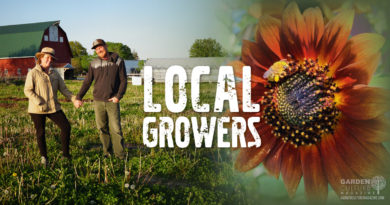Oysters in the Nude with Angry Water
I guess I’m a cold-water bivalve snob, a bivalve mollusk snob to be exact, and not just a professional chef and purveyor of fine foods.
Having spent many years as a young chef, honing my skills in the small, unincorporated former mill town of Seabeck, Washington, nestled in the natural waterway known as the Hood Canal. I quickly learned how to hunt oysters in one of America’s only fjords. The canal is long, narrow, and anywhere from 200 to 800 feet deep, 1.5 miles wide, and roughly 50 miles long. Geographically, it separates the Kitsap Peninsula from the Olympic Peninsula and is a tributary for the Skokomish, Hamma Hamma, Duckabush, Dosewallips, and Big Quilcene rivers. Those from the PNW will quickly recognize those names with that of some of their favorite Pacific Northwest oysters. As I mentioned previously, as one of the only deep-water fjords in the United States, the Hood Canal, is an oyster’s paradise. A long skinny river-fed oyster nirvana tucked inside the Olympic Peninsula. The native Pacific oysters absolutely love it and thrive here, they grow wild everywhere!
I don’t want to name drop, but since I have been a part of the community and oyster industry directly, I’m just going to let loose here: Hammersley, Little Skookum, Toten, Eld, and Budd comprise some of the most famous “oyster appellations” in the Pacific Northwest.
Email Newsletter
Join thousands of other growers who are already receiving our monthly newsletter.
There are, at last count, just under 20 varieties of oysters grown and raised in the Hood Canal. These oysters are now known throughout the world by the names they were given, usually from their appellation location. Weather-grown directly in the canal and in the inlets, mudflats, or inter-coastal waterways, the briny-like cucumber subtleties of each bay and inlet show drastically in each oyster. Each inlet has its own distinction but they all sport that characteristic south sound flavor — rich, intense, full- bodied, more sweet than salty with a hint of cooked green or boiled seaweed, almost musky. Those musky green nuances pair well with spiciness and the picante flavors that fresh raw cannabis and hemp leaves offer.
Having spent many years consuming cannabis and combing the bays and inlets of the canal for wild oysters, it was just a matter of time before the two were connected and propelled into culinary cannabis history forever. These oysters in the nude with angry water will also help your culinary cannabis propulsion. Super easy to execute and definitely a crowd pleaser. Savory, sweet, sassy, smoky, and seductive, a wonderful addition to your culinary cannabis recipe repertoire. I have been preparing and enjoying them this same way for many years and will continue to do so for years to come. I hope you enjoy them as well.

Recipe: Oysters in the Nude with Angry Water
Equipment
- Chef’s knife
- Cutting board
- 1-quart mason jar with lid
- Whisk
- Oyster knife
- Towel
- Serving tray
Ingredients
- ½ cup seasoned cannabis rice wine vinegar
- ½ cup unseasoned rice wine vinegar
- ¼ cup fresh squeezed lime juice
- ¼ cup very fine diced sweet onion
- 2 Tbsp micro fine diced red jalapeno (seeded)
- 1 tsp chipotle adobo (the contents of a can of chipotles, pureed)
- 1 cup finely chopped cilantro with stems
- ½ cup finely chopped fresh cannabis or hemp leaves
- 1 Tbsp sea salt
- 1 Tbsp freshly-cracked black pepper
- 4 Tbsp cannabis sugar
- 3 dozen petit oysters in their shell
Instructions
- Combine all the ingredients (but not the oysters, silly) in a medium mason jar with lid.
- Shake well for 2 minutes or until sugar and salt are dissolved.
- Carefully shuck the fresh oysters onto the half shell and place on a crushed-ice-lined service tray.
- Add a teaspoon or two of angry water to each oyster.
- Consume immediately.
Note: Angry water does not keep well, it has to be used the day it is made… so get more oysters if needed.
More recipes from Chef Sebastian Carosi:




